Ashtanga Yoga
On page cat links
Here's an overview of the Ashtanga yoga system.
On page cat links
Here's an overview of the Ashtanga yoga system.
In the Ashtanga system, the general practice starts of with sun salutations to warm up the body.
These move between standing poses and belly down poses.
Then from there the focus is on standing poses, some of them balancing on one foot poses like Big Toe Pose, then seated poses, most of them seated forward bends or hamstring stretching yoga poses, and supine (belly up) poses, followed by some inverted yoga poses, namely headstand and shoulderstand.
This can be used as a basic template for building your own practice. Sun salutations, standing poses, Seated poses, Supine poses then inversions.
A closer look at sun salutations shows that they include backward and forward bending spine actions. So for example, the first movement of each sun salutation, lifting the arms, can be accompanied by a backward bend of the spine. Also, upward dog involves a backward bend of the spine. Meanwhile, The second movement, bending forwards, can involve a forwards bending of the spine.
They also include backward and forward bending hip actions. The main backward bending hip action happens in upward dog. Forward bending hip actions occur in the standing forward bends, chair pose (at the beginning of sun salutation b) and in downward dog pose.
As for the standing poses, they include a mix of bent and straight knee poses, as well as asymmetrical poses with the legs spread front to back (longitudinal standing poses) and then side to side (lateral standing poses).
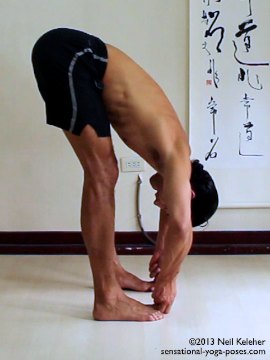
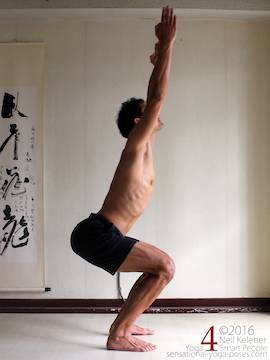

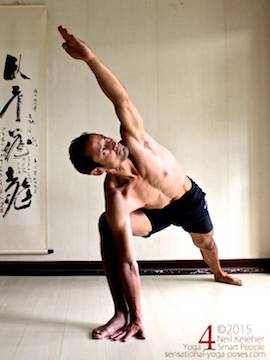
The lateral asymmetrical poses are noteworthy because in these poses, triangle and side angle, the hip is bent to the side with the thigh turned out (or if you prefer, externally rotated.)
The seated poses are mainly forward bends for the hips. A lot of these are asymmetrical with one leg straight and the other knee bent. But, the bent knee leg is taken through a wide variety of bent knee positions.
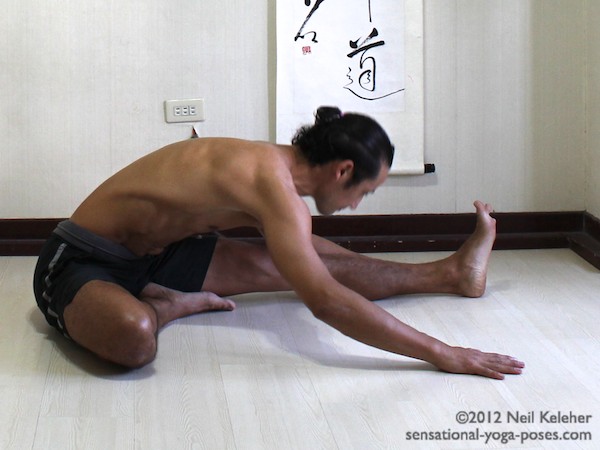
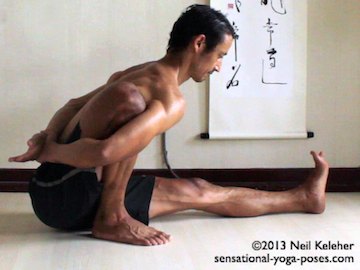
These include positions with the shin folded to the inside of the thigh and to the outside of the thigh.
As an example, the first two asymmetrical seated poses are a lotus pose variation which folds the foot to the inside of the thigh and a hero pose variation which folds the foot to the outside of the thigh.
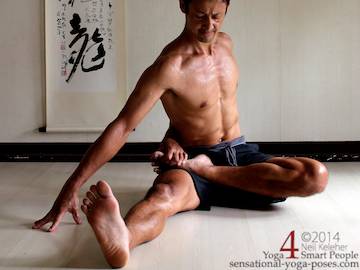
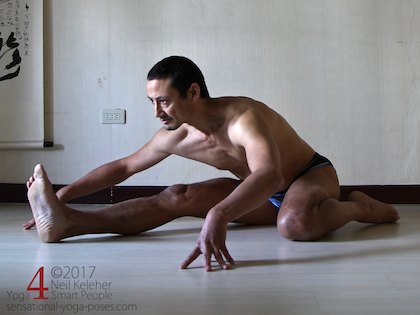
If you look closely at the ashtanga primary series with a discerning eye you'll see that a lot of similarities between the standing poses and the seated or supine poses. It's almost as if the seated part of the series is just the standing poses done sitting down.
